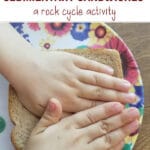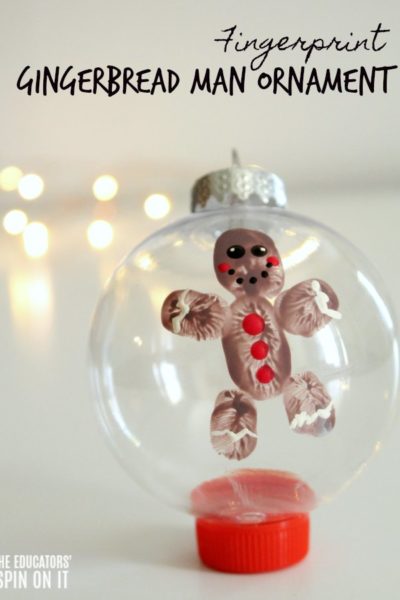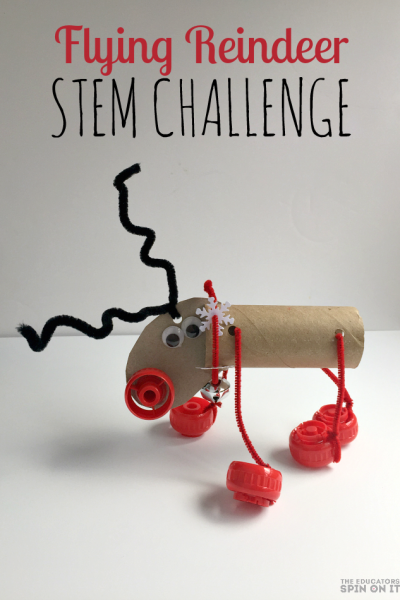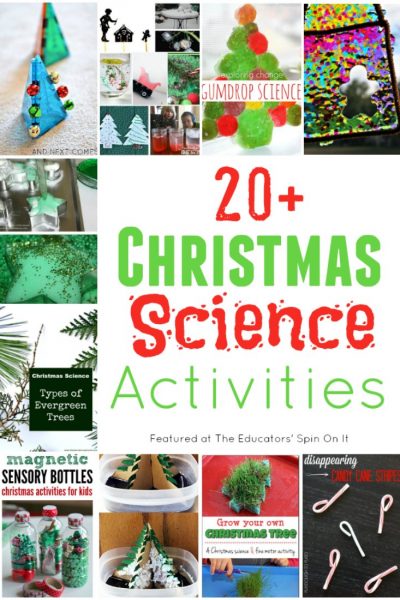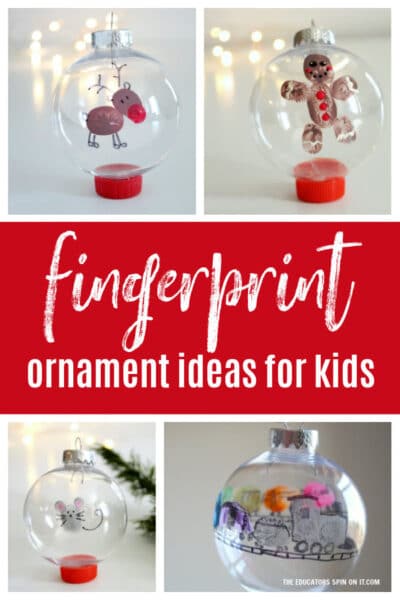A delicious edible sedimentary rock activity to help your preschooler learn about rock formations and layers. Making these edible sedimentary rock sandwich with layers is a great way to visualize how sedimentary rocks are formed.
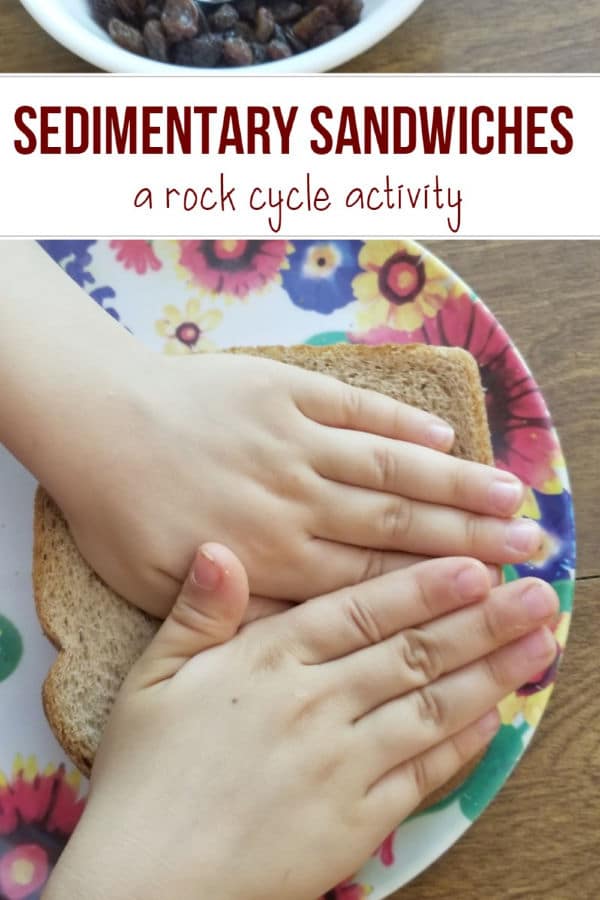
Hi! I am super excited to share our edible and delicious sedimentary rock experiments with you today.
My name is Carla Mae Jansen, and I recently finished writing A Dinosaur Made Me Sneeze, a picture book about the rock cycle (more on that below!). Anyways, I’ve been working on this geology book we have been doing a ton of geology activities as part of our school time. These “sedimentary sandwiches” are an edible way to teach or reinforce the processes that make sedimentary rocks.
How to Make Edible Sedimentary Sandwiches
Simple Supplies:
- Bread (white bread “cements” particularly well, but we used wheat because that is what we have in our home…either one works fine!)
- Peanut Butter (any kind)
- Edible “sediments” – I put out things like raisins, chocolate chips, chia seeds, and peanuts. My kids actually pulled out even more things that they thought would be fun, like oatmeal and jelly!
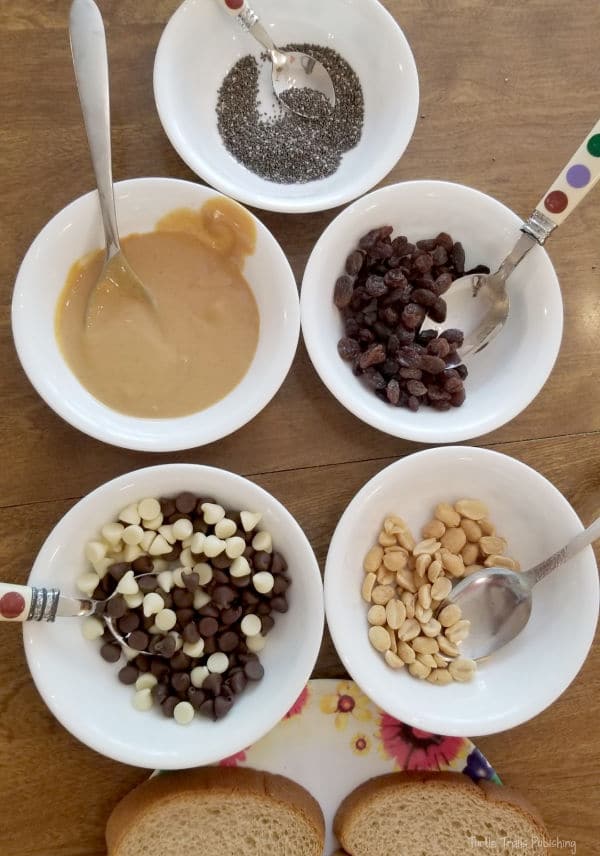
Easy How To:
1. Lay out plates for each child with two pieces of bread on them and set out your “sediments” with any spoons or serving tools you might need.
2. For children under four years old, I spread peanut butter on the bread for them. The kids four and up can spread their own–that is why it is in a serving bowl in the middle.
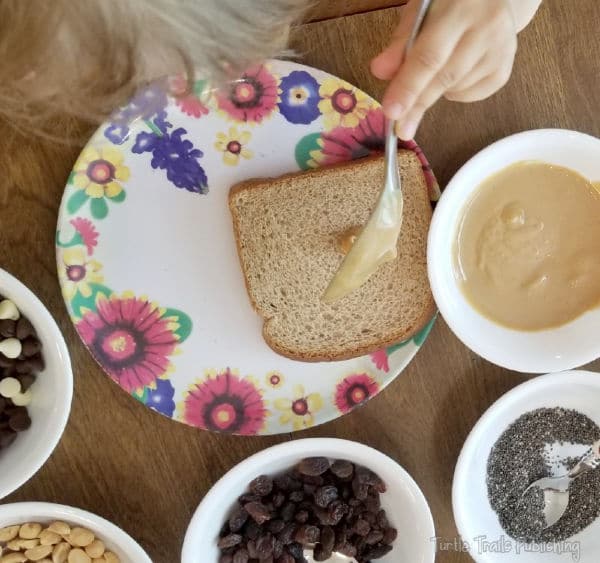
3. As we begin, I say something like,
Sedimentary rocks are made from layers of rocks and sand that get smashed together. Today we are making sedimentary sandwiches by layering our “rocks” (point at the “sediment” choices you set out) and then smashing them into a sandwich!
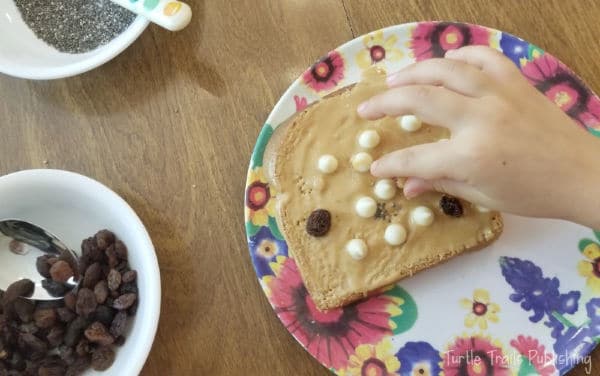
4. Let your kids get to work! Experimenting with different textures and pressures is a huge part of this activity, so don’t get stressed out if they put fewer or more toppings on their bread than you would.
As they work, say things like,
“I see you’re using some chocolate sediments,“
or “Do you have a favorite sediment?“
to help them become familiar with the words sediment and sedimentary. If they ask you what exactly a sediment is, you can explain that sediments are bits and pieces of rocks and dust that sink to the bottom of lakes or oceans.
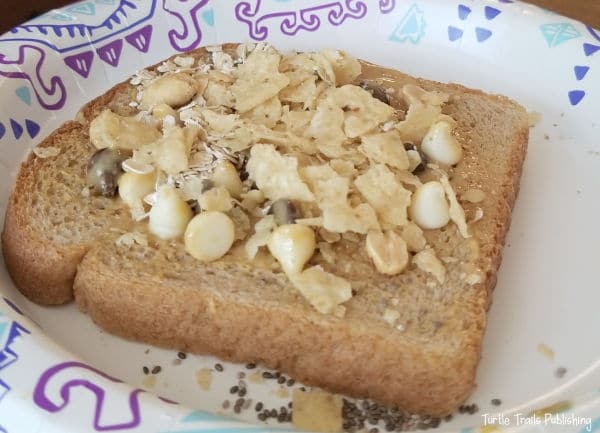
While they work, tell them that the sediments sink to the bottom of oceans or lakes, and then all the water from the ocean, smashes them together into rocks, just like they are about to smash their sandwiches together into “sedimentary sandwiches!“
5. When they finish layering their favorite sediments, encourage them to put the lid on and “smash” it all together to mimic the pressures that cement sedimentary rocks together.
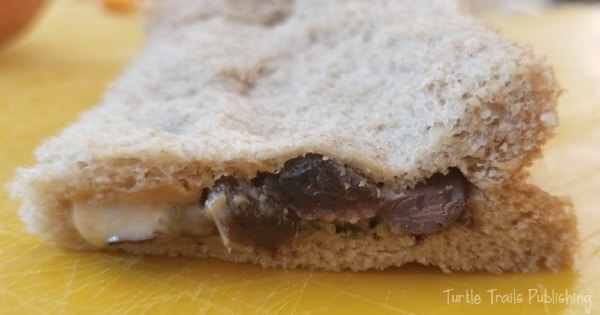
They might notice liquids like jelly or butter squishing through cracks–this is a great time to explain that when sedimentary rocks are made, minerals often melt and then–as they re-harden–they “glue” the sediments together.
6. As they eat, you can put out sedimentary rocks and see if they can see any sediments. Usually you can see the sand and quartz crystals in sandstone or fossils in fossiliferous limestone.
These Rock Cycle Worksheets are perfect for boosting your science fun!
You may also enjoy making these delicious rock cycle chocolate rocks.
Here are a couple of pictures of each of those if you don’t have any close-by:
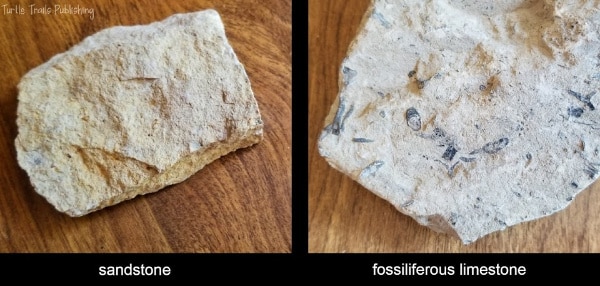
It is also fun to follow this up by going on a “rock-hunt” to find sedimentary rocks. I especially love it when kids find sedimentary rocks in mountain areas, and we get to talk about how the Earth has changed over time, and places that are mountains now were once oceans or beaches.
For even more rock fun, follow these directions for How to Make Rock Slime. You can also set up this Rock Themed Playdough Invitation to Play for your child.
My new picture book, A Dinosaur Made Me Sneeze, also goes perfectly with this activity!
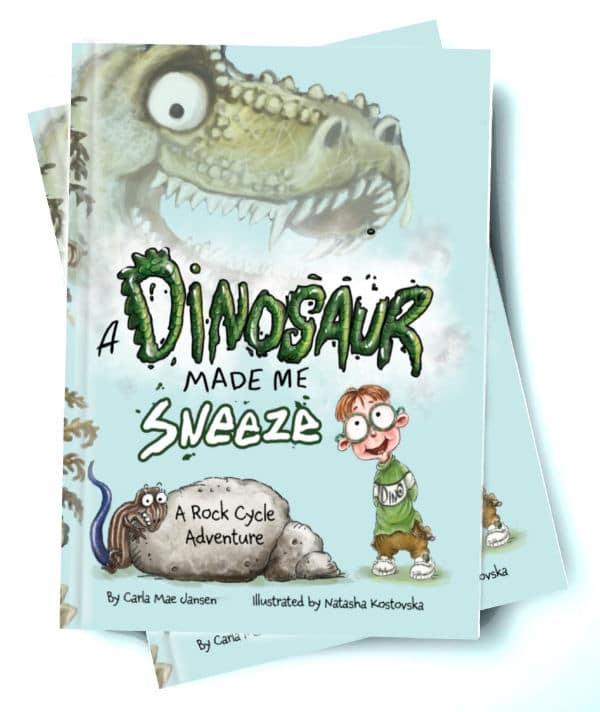
This delightful rhyming story introduces the rock cycle science (complete with vocabulary like “sedimentary,” “igneous,” “metamorphic,” and more!) with fantastic characters and a hilarious story! It showcases the changes that the Earth and rocks on the Earth make as years go by. You can learn more about it, see some of the illustrations, and more HERE!
I hope you have a “rock-ing” time making (and eating!) your sedimentary “rock” sandwiches!
Thanks again for letting me join you, and happy educating!
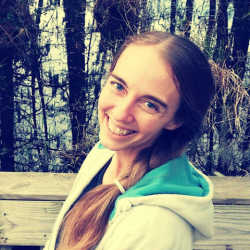
Carla Mae Jansen is an educator, author, and mom who lives in Virginia, USA. She loves going rock-hunting, eating chocolate, and exploring new places with her family. She has a master’s degree in teaching science, and is always looking for something new to learn! You can follow along with her publishing adventures at Turtle Trails Publishing.
Learning about Sedimentary Rocks with Preschoolers
After making the Sedimentary “Rock” Sandwich you can do a quick science review with a few questions of your preschooler. Are you ready for some rock exploration with your child?
rock activities
What does sedimentary rock mean?
Rock that has formed through the deposition and solidification of sediment, especially sediment transported by water (rivers, lakes, and oceans), ice (glaciers), and wind.
Sedimentary rocks are often deposited in layers, and frequently contain fossils. Here are a few examples of Sedimentary Rocks.
How are sedimentary rocks formed
Sedimentary rocks are formed when sediment is deposited out of air, ice, wind, gravity, or water flows carrying the particles in suspension. This sediment is often formed when weathering and erosion break down a rock into loose material in a source area.
Rock Cycle Adventure! Take a look around your community on your next outdoor adventure to see if you have any sedimentary rocks in your area! Be sure to also check out this new book A Dinosaur Made Me Sneeze.
